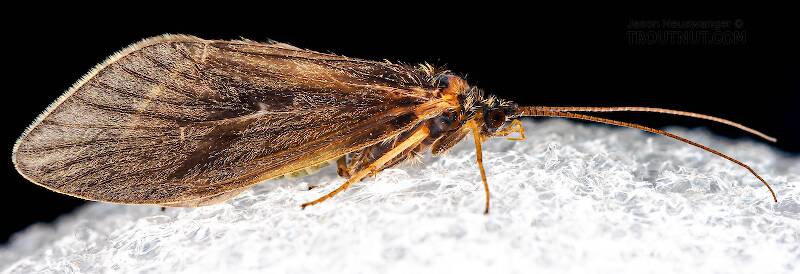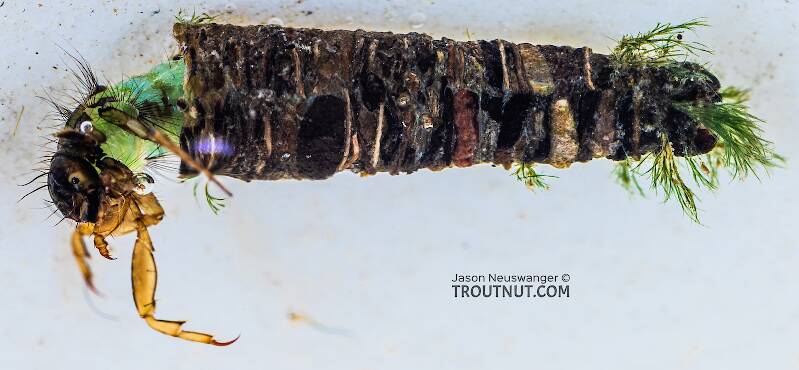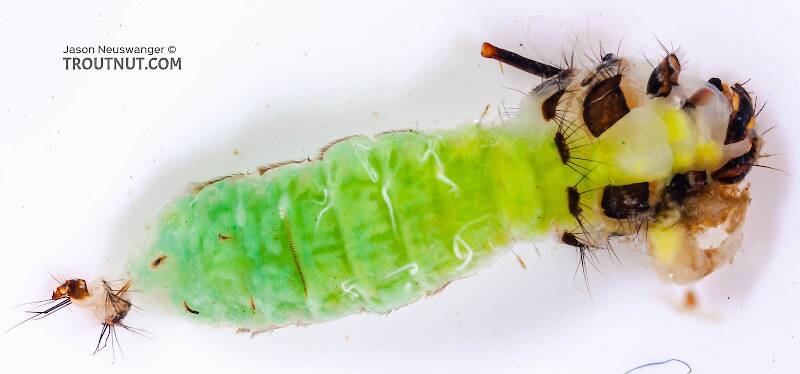
Hex Mayflies
Hexagenia limbata
The famous nocturnal Hex hatch of the Midwest (and a few other lucky locations) stirs to the surface mythically large brown trout that only touch streamers for the rest of the year.
Featured on the forum

With a bit of help from the microscope, this specimen keys clearly and unsurprisingly to Hydropsyche.

Troutnut is a project started in 2003 by salmonid ecologist Jason "Troutnut" Neuswanger to help anglers and
fly tyers unabashedly embrace the entomological side of the sport. Learn more about Troutnut or
support the project for an enhanced experience here.
Apple Caddis and Grannoms
This common name refers to only one family. Click its scientific name to learn more.
Caddisfly Family Brachycentridae
These are pretty much always called Apple Caddis and Grannoms.
Brachycentrus is one of the most important caddisfly genera in America. Microsema is smaller and rarely, if ever, significant. Amiocentrus aspilus can be an important Western hatch.

I captured this specimen in the same color as this photograph, during its egg-laying flight. The emergers are much lighter.

This species of Brachycentrus was extremely common in mid-September kick net samples in the Yakima canyon.

The green blob contained in this case is a pupa in the early stages of transformation from larva to the final stage we generally picture and imitate. This specimen and several like it were fixed to a rock I picked up, and each one had the front of its case sealed off, protecting the helpless pupa from predation. It's neat to see the insect part-way through such a radical transformation.
It was very hard to extract this thing from its case, so there's a bit of extra goo near the head from where I accidentally punctured it.
It was very hard to extract this thing from its case, so there's a bit of extra goo near the head from where I accidentally punctured it.
See 6 more specimens...

